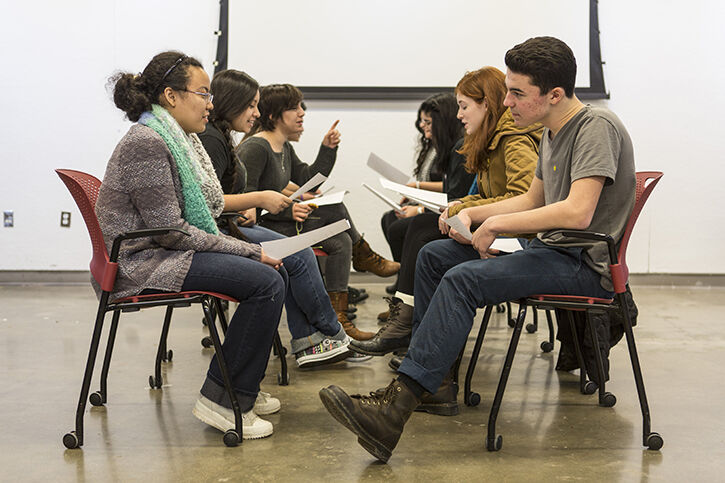
Arts High

by Troy Pieper (MA 2015)
Now in its pilot semester, #InsideInnovativeMinds (#IIM) is making the arts more accessible to Chicago Public Schools (CPS) high school students. The weekly course, developed by SAIC's Continuing Studies department, connects students with working artists in Chicago and develops the skills needed to sustain a long-term art practice.
“We wanted to be able to say to CPS students: ‘These [artists] live here in Chicago, not in LA or New York, and they’re having successful creative careers here.’ Those career pathways are what #IIM makes visible to students,” says Rob Bondgren, dean of Continuing Studies.
The course’s format is three parts: presentations by working Chicago artists about their practice and workshops they lead, as well as field trips to visit artist studios, museums, and performance events.
Bondgren has big plans for the future. Eventually, he says, CPS teachers will also attend the presentations and workshops given by artists. Then Continuing Studies will work with teachers to develop a curriculum around them. Class sessions are documented and will eventually be part of “sort of a Chicago-based Art21,” says Kristina Wyatt, assistant dean of Continuing Studies. Art teachers in CPS will be able to use that documentation to connect students in their classrooms to local artists.
Currently, Continuing Studies opens the lectures to the general public in an effort to further connect with the community.
“One of our goals is to encourage a strong community…so that students can leave here with friends whom they can attend art events with,” agrees Ruslana Lichtzier (MA 2013).
With that in mind, students were accepted into the course from all across CPS, encompassing a wide range of ethnic, social, and economic groups, so that they build relationships with students they would not otherwise have had a chance to meet.
The instructors developed five “R’s:” research, reflection, reinvention, reaching out, and radical production. Some of the units in the course focus on more theoretical skills like constructive criticism and discussing issues like identity politics, background, and the role of art in society. One of the goals of the course, according to instructor Jennifer Mills (MFA 2011), is to open up the idea that it is okay to talk about ideas that may be difficult and figure out how to articulate things that exist in a gray area.
“When we started meeting with CPS teachers, it became really clear that the work we’re doing here is very important,” says Bondgren. “It’s important that teachers have support and that CPS students have opportunities like this.”
Through #IIM and SAIC’s larger partnership with CPS, students who may have never been able to otherwise will gain access to resources at SAIC and the arts community in Chicago. Having grown up in a tiny community with few cultural resources, Bondgren says #IIM is near to his heart: “Kids in Chicago need to see what’s right in their backyard.”
